1. Introduction
Sovale is a silk dhoti which is mostly worn during ritualistic worship, religious functions etc. It is available in many colours such as red, yellow, saffron. A yellow sovale is known as pitambar.
2. Importance of wearing sovale during ritualistic worship
In Hindu Dharma, men traditionally wear sovale during ritualistic worship of Deities, religious rituals, vrats (Vowed religious observances), festivals and various auspicious occasions. The Principles of Deities, sattvikta and Chaitanya are imbibed and sustained in greater proportion in a silk cloth. Besides, all these are also emitted into environment, from which the worshipper benefits. It helps him develop and preserve his bhav (Spiritual emotion) towards the Deity.
3. Wearing sovale during religious ceremonies such as marriage
An individual should not wear Raja-Tama-predominant clothes such as coat and tie, pant and shirt (even though they look attractive) if he wants his body, mind and intellect to obtain maximum benefit from the mantras being recited during religious ceremonies such as marriage. Religious sanskars (Subconscious impressions) will not be impressed effectively on the mind due to the clothes that cannot be tucked at the back. Hence, during religious occasions a sovale must be worn.
4. Use of sovale while cooking and during meals
While cooking and serving meals – ‘Women folk in many families traditionally wore a white sari while cooking and serving meals. They would treat that sari as sovale. Men also should follow this tradition.
During meals:
-
Wear sovale during meals.
-
Wear a dhoti or wrap a pancha (A smaller hand-woven version of dhoti) at the waist and wear a pancha over the shoulders during meals. (Clothes such as shirt, pant, cap should not be worn during meals.)
-
Clothes to be worn while performing day-to-day activities (other than meals) should be separate.
– Gurudev Dr. Kateswamiji
5. Method of wearing sovale
Sovale is worn like a dhoti using the ‘Shatakachha’ method, that is, tucking it at six places. At some places, it is worn by tying a knot near the navel or by tucking it at five places.
5A. A sovale that is tucked at five places and is associated with the Panchamahabhutas (The five Cosmic Principles)
Implied Meaning :
5A 1. A knot of sovale is tied at the navel. The area around the navel is known as ‘Panchakmandal’. Panchapran (Five vital energies) which congregate at the navel region are activated by the sustained pressure of the knot at the navel. These Panchapran are associated with Panchamahabhutas in the Bramhandamandal (Cosmos). Upon wearing sovale, an individual gets automatically connected with the Panchamahabhutas, meaning, he unknowingly gets connected with the Bramhandamandal. In this process, since the individual does not make any conscious attempts to get connected with the Bramhandamandal, a kind of Sahajdharana (Natural state of communion with God) is generated unknowingly in the individual.
5A 2. Pleats of sovale are tucked at the same place as the knot, which is associated with the Panchakmandal. These pleats emit vibrations associated with the Bramhandmandal and Panchmahabhutas as required into the environment. In this process, although a sovale is seen as being tucked in one place at the centre of the navel region, since it is associated with the five places related to Panchapran, it is said to have been tucked at five places.
6. Spiritual experience upon wearing sovale
On Shravan Krushna 8, Kaliyug Varsh 5110 (23.8.2008), Shrikrushna Janmashṭami (Day of Shrikrushna’s birth) was being celebrated in Sanatan’s Ashram at Miraj. I was allotted the seva (Service unto the Absolute Truth, that is, God Principle) of performing evening arati (A ritual of waving a lit lamp in front of a Deity and Saints, accompanied by singing of hymns). Usually, while performing arati my mind is not focused on the Arati, but wanders. That day, I had worn a sovale while performing arati. I felt that my mind would not wander that day. Outwardly, I could perceive that the negative energies were attacking me, but I could experience that the sovale had formed a protective sheath around me. Therefore, I was not at all affected. That day, when the lullaby for Shrikrushna was being sung, I perceived that the cradle was actually rocking.
7. Sovale and Uparne
During auspicious occasions such as puja (Ritualistic worship), abhishek (Consecration by ritualistic bathing with water, milk, etc.), marriage, it is customary for men to wear a sovale and an uparne on their left shoulder. The uparne on the shoulder should have a fold in the front, tassels at the back and the border should be towards the outer side.
7A. Although a circular protective sheath formed around the body of men when uparne is used during puja, abhishek, etc. protects them from negative energy distress, benefit to a greater extent is at the emotional level
7A 1. Upon wearing uparne or shawl over our shoulders while performing puja, abhishek, etc. the waves of Shakti (Divine Energy) emitting from the Deity are in a way restricted. Due to this restriction, an individual that performs the worship is not distressed by the flow of Shakti that emanates from the Deity.
(Since the spiritual level of common man is low, he is not capable of sustaining the powerful waves of Shakti emitted by the Deity. Due to these waves, the individual can face distress such as heaviness of the head, generation of heat in the body, pain in the eyes, etc. An individual with a high spiritual level is not distressed in the above mentioned manner. – Compiler)
7A 2. To begin with, waves of Shakti are blocked by the uparne and shawl, and later a circular protective sheath of these swift waves of Shakti is created around the individual. This sheath prevents negative energies from causing distress to the individual during worship.
Compiler : Nowadays, no one has enough bhav during worship. Consequently, the flow of Shakti from the Deity is also less, and as a result, there is no question of the individual getting distressed by the flow of Shakti. Whatever little Shakti is obtained due to little bhav is blocked by the uparne or shawl worn over the shoulders. Considering these points, we would like to know about the use of an uparne or shawl during worship.
Shri Gurutattva : This is an attempt at the emotional level by the individual in Kaliyug to retain their modesty.
(Individuals whose spiritual level is above 50% have higher level of bhav, and hence, they get the true spiritual benefit of uparne and shawl. Individuals whose spiritual level is less than 50% benefit more at the emotional level and very minimally at the spiritual level. – Compiler)
7B. Subtle-effects of wearing sovale and uparne on men
-
Upon wearing sovale and uparne we understand the meaning of abiding by Dharma hence, we obtain benefit due to understanding the importance of science of Spirituality.
-
Wearing these clothes purifies the Kunḍalini-chakras (Centres in the spiritual energy flow system) and they start moving in a steady manner hence, the breathing of the individual also becomes steady.
-
Since these clothes contain Panchatattva (The five Cosmic Principles) and are in use since ancient times, they are more sattvik. They are not modern and do not attract other’s attention towards them.
-
Upon wearing these clothes, physical and spiritual purification of the individual takes place and the distressing energy covering around him is reduced.
-
When an individual walks wearing sovale and uparne, flow of Chaitanya is emitted in a large proportion that is 1.5%.
Reference: Sanatan Sanstha’s Holy Text ‘Spiritually beneficial clothes for men’

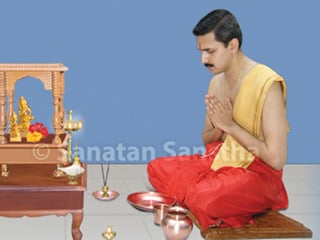
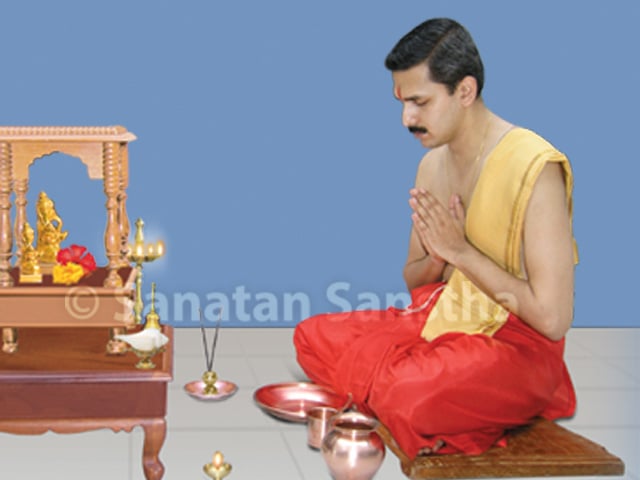
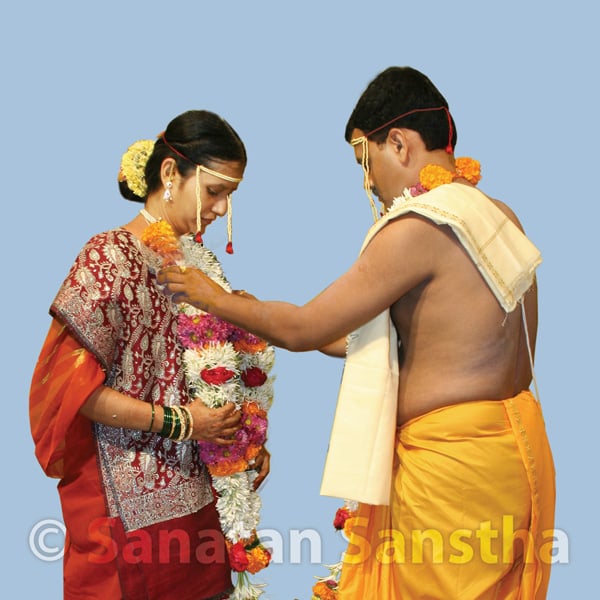
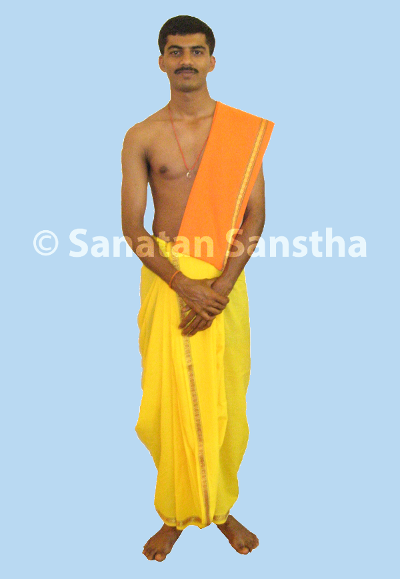
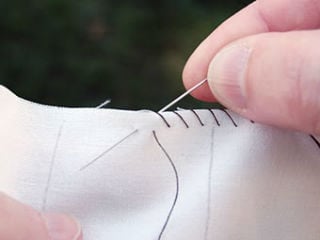 Sewing Clothes and Effect of Stitching
Sewing Clothes and Effect of Stitching Practical suggestions on Wearing Clothes
Practical suggestions on Wearing Clothes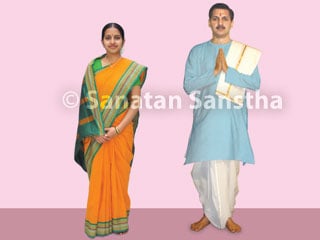 Why do we wear clothes ? and Importance of wearing Sattvik Clothes
Why do we wear clothes ? and Importance of wearing Sattvik Clothes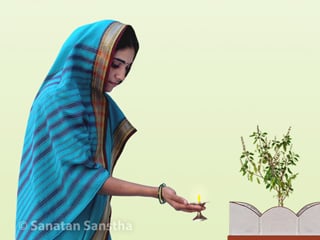 Significance of taking saree pallu (free end of the saree) over head
Significance of taking saree pallu (free end of the saree) over head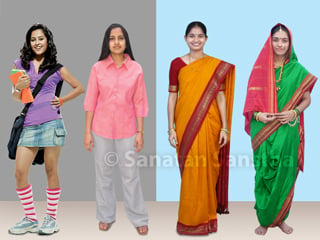 Subtle effect and Importance of dress worn by a woman
Subtle effect and Importance of dress worn by a woman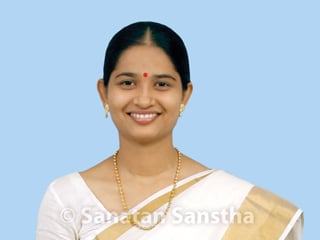 Subtle effects of different neckline patterns of a garment worn by women
Subtle effects of different neckline patterns of a garment worn by women